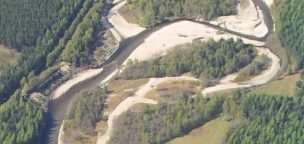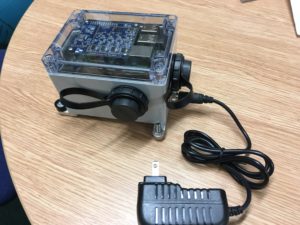NERC E4 PhD Studentship: Seismic monitoring of the mobilisation and transport of bedload in mountain rivers

Project Summary: You will develop and utilise a seismic monitoring system to monitor the mobilisation and transport of bedload in mountain rivers to understand impacts on flood hazard and fluvial erosion rates.
A full description of the project can be found on the E4 website.
Project Background: Rivers that drain mountain catchments carry a bedload comprised of gravel, cobbles and boulders, which are exposed during low flow conditions. The erosion and re-deposition of this sediment plays an important role in the likelihood and distribution of flooding and can impact critical infrastructure such as bridges and dams, and agriculture. Measurement of the threshold flow conditions required to mobilise sediment bedload is logistically challenging, and hence relatively understudied. Research in Edinburgh has identified rivers across Scotland, and in Nepal where measurement of the critical flow conditions for bedload transport would contribute significantly to understanding flood impact. The recently developed field of enviro
nmental seismology has delivered the foundations for tackling this goal: seismic sensors can record signals due to water and material flux at safe distance and physical models allow to invert the data for hydraulic conditions and bedload flux. In this PhD you will use low cost seismic sensors, backed up by state-of-the-art benchmark seismic stations, in conjunction with stream gauge data and sediment grainsize measurements, to monitor the mobilisation of bedload in mountain rivers and consider its application in flood models.

Methodology: This project will take advantage of low-cost seismic monitoring equipment that has recently become available. For example, the Raspberry Shake (https://raspberryshake.org) is a low-cost seismic sensor that is lightweight and can be easily deployed. We are currently trialling their use for monitoring of geomorphic processes in rivers. You may need to work with technical staff to tailor the equipment to address your research requirements. Analysis of the data collected will be done in either Python or R; training will be available to help with this but an enthusiasm to develop coding skills is important. The project also requires that you undertake quantitative modelling of bedload processes in order that you can generalise your results and apply the results to improve our understanding of mountain systems.
Supervisory Team and Edinburgh Environment: At Edinburgh you will be a part of both the Land Surface Dynamics research group and the GeoHazards research group, both of which have healthy PhD cohorts. The supervisory team brings together a range of expertise:
- Dr Mark Naylor is a physicist and statistical seismologist with expertise in natural hazards and mountain belt evolution.
- Prof Hugh Sinclair is a sedimentologist with expertise in mountain systems.
- Dr Mikael Attal is a Senior Lecturer in Geomorphology with expertise in fluvial transport and erosion.
- Dr Micha Dietze is an environmental seismologist with expertise in building station hardware and analysis software, and experience in deployment, maintenance, analysis and interpretation of seismic data from geomorphological systems.
Training: A comprehensive training programme will be provided comprising both specialist scientific training and generic transferable and professional skills. In addition, you will receive specific training in the deployment and use of seismometers for monitoring geomorphological processes including a training visit to Potsdam. We encourage students to participate in at least one externally hosted summer school to gain a broader perspective. In addition, you will participate in whiteboard discussion sessions and the LSD discussion group.
Requirements: You will have an undergraduate degree in geophysics, physics, engineering, or be a quantitative earth scientist and have an interest in the evolution of rivers in mountain environments. You will have some experience of computer programming and be willing to learn more. Evidence of good communication skills in oral and written presentations would be a significant advantage.
Further Reading:
Burtin, A., Hovius, N., McArdell, B. W., Turowski, J. M., and Vergne, J.: Seismic constraints on dynamic links between geomorphic processes and routing of sediment in a steep mountain catchment, Earth Surf. Dynam., 2, 21-33, https://doi.org/10.5194/esurf-2-21-2014, 2014.
Roth, D. L., E. E. Brodsky, N. J. Finnegan, D. Rickenmann, J. M. Turowski, and A. Badoux (2016), Bed load sediment transport inferred from seismic signals near a river, J. Geophys. Res. Earth Surf. , 121, 725 – 747, doi:10.1002/2015JF003782.
Gaeuman, D. (2016) Seismic Monitoring of Bedload Transport in a Large Gravel-bed River, Research and Development Office Science and Technology Program Final Report ST-2016-5561-1 (https://www.usbr.gov/research/projects/detail.cfm?id=5561)
(Photo contributed to wiki commons by Anne Burgess)
(Photo contributed to wiki commons by Anne Burgess)




Recent comments